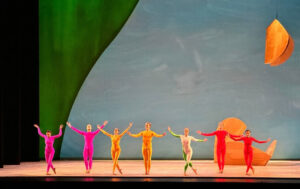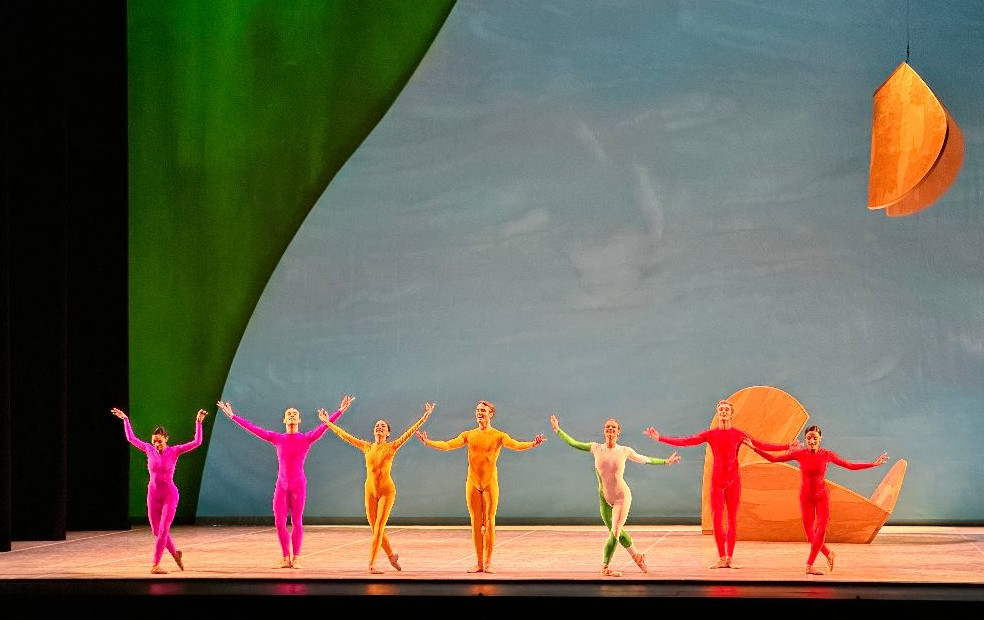Ballet Austin gave the city a huge gift this month with its performance of a world premiere entitled I Am The Monument, composed by Artistic Director Stephen Mills.
In creating it, “A lot of things came together that were inspirational,” explained Mills. “Starting with COVID, and then the murder of Mr. Floyd and the movement that happened after that, and the conversation around monuments and what they represent in our society. We do an average job at representing important things in our country – I think the 9/11 Memorial is a good memorial and the memorial in Israel to the Holocaust is an amazing memorial, but I also think that there are memorials in America that are simply meant to celebrate criminals that I think may have been used in the past to intimidate people. I for one am happy they have been taken down.”
He raised the oft-asked question as to ‘Who are the three people you would like to have dinner with?’ His response is “Abraham Lincoln, Harvey Milk and Ruth Bader Ginsburg, and then I said I’d pull another seat up for Prince.”
Adopting a more philosophical approach, Mills said “The most important monuments are the legacies you leave behind. For instance, Ginsburg is truly an idol of mine, a person who did so much for the advancement of women. Her legacy is her monument. So there are a lot of representations that are personal to me in the ballet.” Since the audience only saw this performance once, without the insights he offered that I just quoted which were given after the show, it would require another very careful look and further elaboration from the composer about what other personal ‘representations’ were in his mind to really see or understand what it is all about. (I spoke to someone in the audience who has been a supporter of the ballet for 30 years and she had no idea what the ballet meant.) Without the benefit of dialogue, which ballet lacks, I can only say that it was very dramatic, with the first movement in particular movingly powerful, as the male dancers alone dominated the stage with staccato-like motions.
For stunning visuals, plaudits must go to the second piece on the bill, Garden Blue (pictured here) by Jessica Lang. It was made for American Ballet Theatre. “Ballet Austin is only the second company to perform this work, something I’m pretty proud of,” said Mills. Ballet dancer James Fuller said while working with Lang “she kept describing all the imagery of birds and insects that informs the movement. Of course there are videos of American Ballet Theatre doing the work but she didn’t really have us watch the video so much because she wanted us to find the work for ourselves – for it to make sense for us. It became very much our own, and I think Jessica Lang really wanted that.” The highly geometrical design of the set and the mobiles was inspired by the helicopters that fall down from oak trees and the movements inspired by the wings of birds. It was certainly one of the most stunning set designs I have seen, both kinetic and evocative, courtesy of set designer Sarah Crowner of New York.
The three-piece performance of the evening (entitled Sarah’s Songs) was dedicated to Sarah Butler. Her and her husband have donated nearly $10 million to Austin Ballet over the last 25 years. In 2019 Mills said “we were given a gift by Dr. and Sarah Butler called the Butler New Choreography Endowment which was to create every year a large full-length production. Our first was Grimm Tales, but COVID put us 2 years behind.” I reviewed Grimm Tales in 2019, and it can be found at this link:
“As a way to say thank you for all her years of service to Ballet Austin I decided to put these works together to talk about the things that Sarah means to me and the things she might enjoy. We start with George Balanchine’s iconic ballet Serenade which uses the music from Tchaikovsky’s Serenade for Strings. Even though Sarah is a classicist at heart, she has a contemporary bent to her. This was the first ballet Balanchine made in America, in 1935, and he used it as a teaching tool for young students.” Mills lamented that he had never got the chance to dance in it himself. “It’s a real masterpiece, and there are so few dances that you could say that about.” The trio of pieces were performed flawlessly, and it was an amazing treat to see them.
Photo: dancers take their applause at conclusion of Garden Blue
Ballet Austin is one of the city’s great treasures. Visit their website for future performances:
BalletAustin.org

